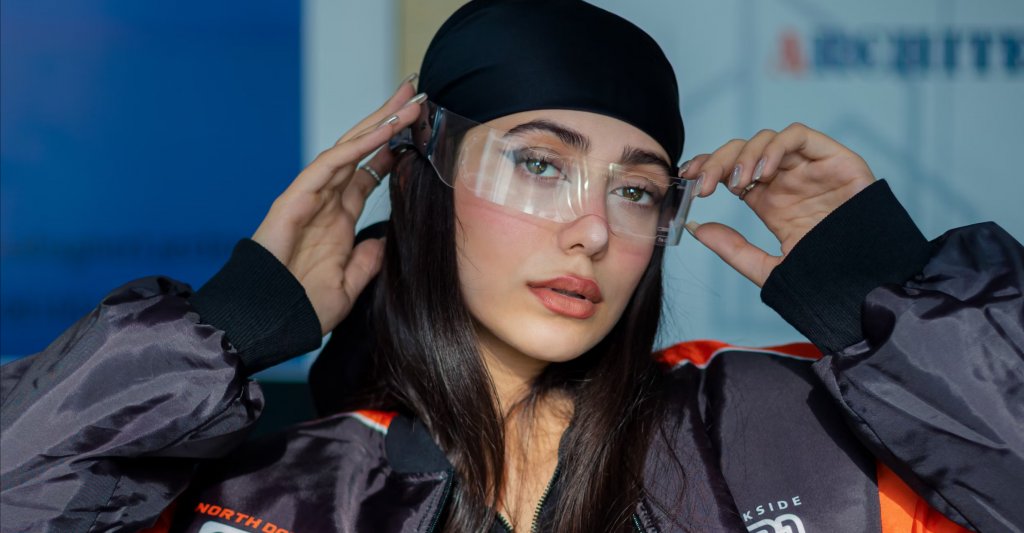
Have you ever wondered what happens when your favorite hoodie becomes smarter than your smartphone?
Welcome to the dawn of smart fashion, where technology weaves its way into the very fabric you wear. In this deep dive, we’ll unpack why smart garments are poised to redefine style, function, and even identity in the decades ahead.
What Is Smart Fashion?
Smart fashion refers to clothing and accessories embedded with digital components—like sensors, actuators, and connectivity modules—that respond to your body, environment, or external commands. Think jackets that adjust temperature, shirts that track heart rate, or socks that guide you through a marathon. These aren’t sci-fi dreams; they’re here today.
Historical Roots of Wearable Tech
Early Experiments in E-Textiles
In the 1990s, MIT’s Media Lab created the “CuteCircuit” T‑shirt that lit up in response to music. It was clunky, power-hungry, and cost thousands—but it proved the concept. That initial spark ignited a wave of innovation across research labs and fashion houses.
From Runway to Real Life
Fast-forward to the 2010s, and fashion week runways showcased LED panels sewn into gowns, dresses that changed color via embedded electronics, and fabrics that harvested solar energy. Those flashy demos signaled to the world that wearable tech could be both beautiful and functional.
Key Technologies Powering Smart Garments
Conductive Fibers and Fabrics
Instead of bulky wires, engineers now weave conductive silver or carbon fibers into yarn. These fibers carry electrical signals without compromising softness. Imagine stitching your favorite T-shirt with tiny circuits that remain invisible to the eye.
Sensors and Actuators
Sensors detect changes—like temperature, motion, or biometric data—while actuators execute commands, such as tightening a strap or emitting gentle vibrations. This sensor-actuator duo turns everyday clothing into dynamic wearables.
Connectivity: Bluetooth, NFC, and Beyond
To communicate with your phone or the cloud, smart garments use low-energy Bluetooth, NFC tags, or upcoming 5G modules. That connectivity layer enables real-time monitoring, over-the-air updates, and seamless user control.
Applications and Use Cases
Health and Wellness Monitoring
Imagine a yoga top that tracks your breathing patterns or a sports bra that alerts you to abnormal heart-rate spikes. Smart textiles can continuously monitor vital signs, empowering preventive healthcare and early diagnosis.
Performance Enhancement in Sports
Athletes crave every edge. Smart compression garments measure muscle activity, optimize recovery, and provide real-time feedback. GPS-enabled shirts map your run, while haptic shorts guide posture—making training data-driven and personalized.
Adaptive Climate Control
Cold commute? Your jacket senses dropping temperatures and activates heating elements. Step inside a warm café, and it cools off automatically. No more bulky layers or fumbling with zippers—your clothing adapts on the fly.
Leading Brands and Collaborations
High-Fashion Meets High-Tech
Balenciaga showcased LED-infused gowns, while Ralph Lauren’s Polo Tech shirt combined hex-sensor arrays with stylish design. Early models were pricey collector’s items, but they signaled luxury’s serious interest in wearable tech.
Sportswear Innovators
Under Armour’s Athlete Recovery Sleepwear uses ceramic-infused fibers to reflect infrared energy, aiding muscle recovery overnight. Meanwhile, Nike’s partnership with Apple produced the Apple Watch Nike+, illustrating the power of cross-industry collaboration.
Design Challenges and Considerations
Durability and Washability
Electronics must survive countless wash cycles, sweat, and stretching. Waterproof coatings, detachable modules, and ruggedized circuits help—but each addition risks added bulk.
User Comfort and Aesthetics
No one wants a stiff, plastic-laden jumper. Tech must be unobtrusive—thin, lightweight, and flexible. That often means sacrificing some functionality in favor of comfort and style.
Balancing Function and Style
The golden rule: form follows function, but fashion can inspire function. Designers collaborate with engineers to create pieces people actually want to wear—because adoption hinges on desirability.
Manufacturing and Supply Chain Impacts
New Production Processes
Traditional garment factories transform into facilities where workers solder sensors, program microcontrollers, and test circuits alongside cutting and stitching fabrics.
Sustainability and E-Waste
More electronics can mean more e-waste. Brands face pressure to design modular systems, enable repairs, and use recyclable components. Circular-economy principles are critical to avoid swapping textile waste for tech waste.
Consumer Adoption and Market Trends
Price and Accessibility
Cutting-edge smart garments still carry premium price tags—often several hundred dollars per piece. Economies of scale and commoditization will drive costs down, but mainstream affordability remains a future goal.
Cultural Acceptance
Privacy concerns arise when clothing tracks location or health data. Will consumers trust brands with personal metrics? Transparent data policies and robust security protocols are non-negotiable.
Future Trends in Smart Fashion
Integration with AI and AR
Imagine your mirror analyzing your outfits and recommending changes via augmented reality overlays—or AI-driven fabrics that adjust insulation based on your calendar’s forecasted weather.
Fully Customizable Smart Wardrobes
Envision subscription-based wardrobes where you lease modular smart components—sensors, heating pads, LED panels—and swap them between garments. Style meets sustainability as you refresh look and function without discarding textiles.
Conclusion
The convergence of tech and textile is more than a gimmick—it’s a paradigm shift. Smart fashion empowers self-expression, performance, and health in ways we’re just beginning to imagine. As materials improve, costs fall, and designers embrace the challenge, our wardrobes will become platforms of innovation. Get ready: your clothes are about to get a lot smarter.

FAQs
Q1: Are smart garments safe to wash in a regular laundry machine?
Many smart pieces offer detachable electronics or special wash modes, but always follow manufacturer instructions—air-dry and use gentle cycles to prolong lifespan.
Q2: How is battery life managed in smart clothing?
Designers use low-power components and intermittent data sampling. Small rechargeable batteries or energy-harvesting fabrics (solar, kinetic) extend wear time between charges.
Q3: Will smart fashion replace traditional clothing?
No—rather, smart and conventional wear will coexist. Tech-enhanced pieces serve specific needs (health, sports, environment), while classic garments remain staples of everyday style.
Q4: How much should I expect to pay for entry-level smart apparel?
Entry models start around $100–$200, but full-featured smart jackets or performance gear can exceed $500. Prices will decrease as technology matures.
Q5: What happens to outdated smart garments?
Look for take-back or recycling programs. Some brands harvest reusable electronics, while textile components can be upcycled or composted, minimizing e-waste.






